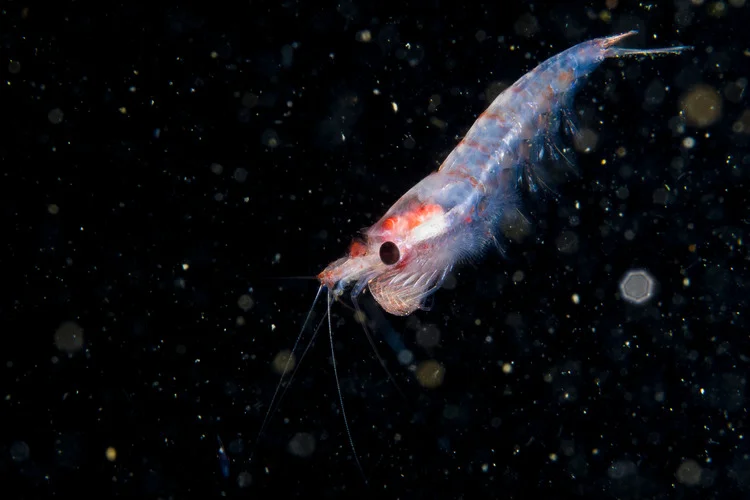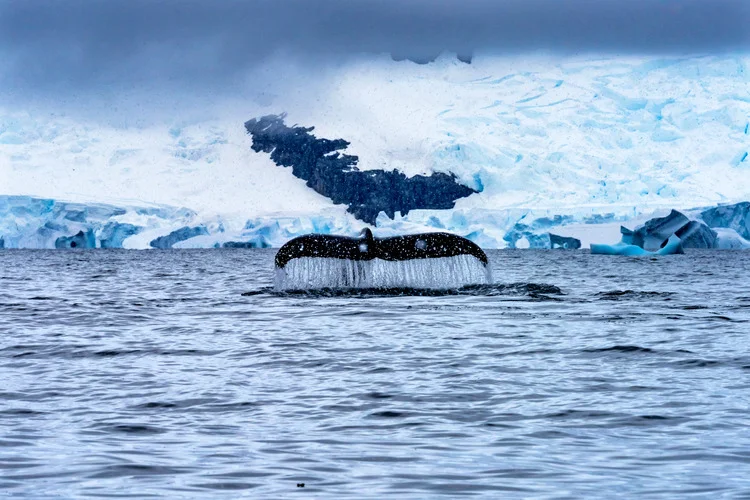
They might be small, but they’re certainly mighty: krill play a major role in carbon sequestering in oceans across the world. Here’s how…
By Charlotte O’Gorman Lalor
New research has uncovered the remarkable role of Antarctic krill – which can form swarms reaching up to 30 trillion individuals – in storing carbon, showing their ability to rival the carbon-sequestering properties of key coastal habitats such as mangroves, salt marshes and seagrasses.
Krill feed on phytoplankton, which absorb carbon dioxide from the atmosphere. As krill excrete waste or shed their exoskeletons, the carbon they have absorbed is sequestered in the deep ocean.
In the new study, researchers combined krill density and faecal pellet production rates to calculate the total carbon produced by krill waste. They then estimated how much of this carbon sinks and decays into deeper ocean layers, where it can remain sequestered for around 100 years.
Their findings revealed that this ‘rain’ of krill waste locks away at least 20 million tonnes of blue carbon into the ocean annually, with a value of up to $46 billion.
Threats to krill habitats
Despite their importance, krill face increasing threats from human activities. As climate change warms the Southern Ocean, krill habitats are shrinking, particularly as the Antarctic sea ice – essential for larval krill – melts. This has important impacts on krill physiology, distribution, swarm size and frequency. Additionally, krill are harvested in large numbers for food, bait, aquaculture and dietary supplements. The industry is worth $250 million annually, further jeopardising their populations.

Lead researcher Dr Emma Cavan from Imperial College London stresses the need to protect krill and their habitats as much as other blue carbon habitats: ‘Krill, despite their size, play a massive role in global carbon storage, much like coastal plants. We must act to safeguard these valuable ecosystems.’
Co-author Dr Neill Mackay from the University of Exeter added: ‘Protecting krill isn’t just about preserving ecosystems; it’s also about safeguarding a critical carbon
sink.’
However, there is optimism for krill protection, particularly with the adoption the United Nations’ Agreement on Biodiversity Beyond National Jurisdiction (BBNJ), also known as the High Seas Treaty. The treaty, adopted on 19 June 2023, is a legally binding document aiming to conserve and ensure the sustainable use of marine biological diversity in areas beyond national jurisdiction. Previously, only around one per cent of these waters have been afforded protection.
The treaty is central to safeguarding 30 per cent of the world’s oceans by 2030, as agreed at the 2022 UN Biodiversity Conference, and supports krill’s role in carbon sequestration.



